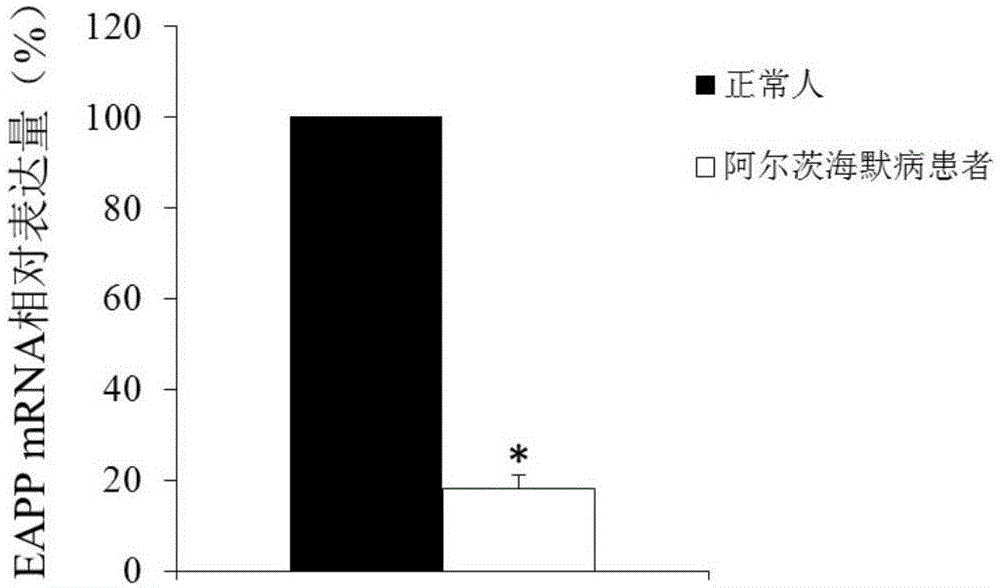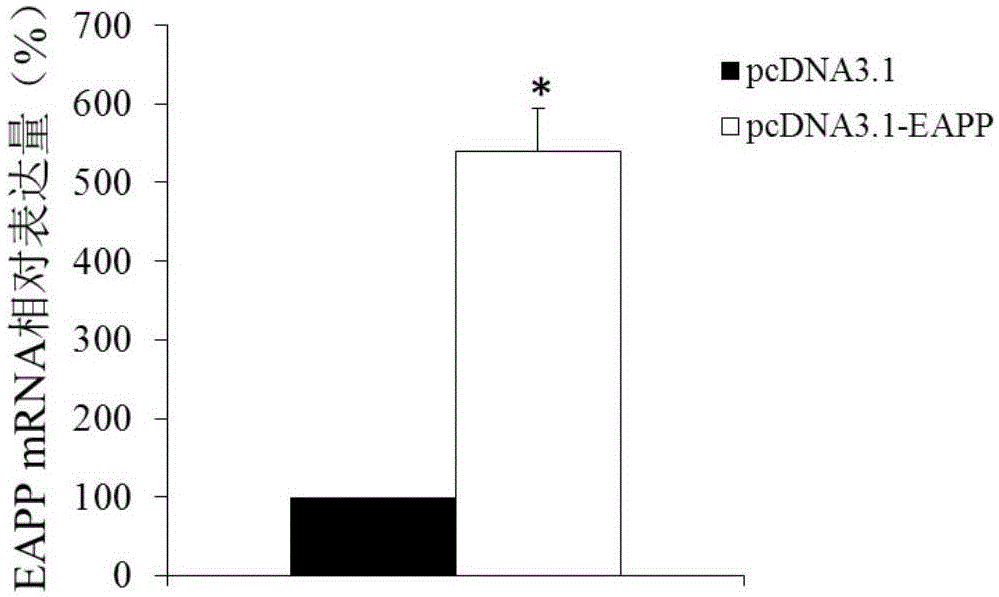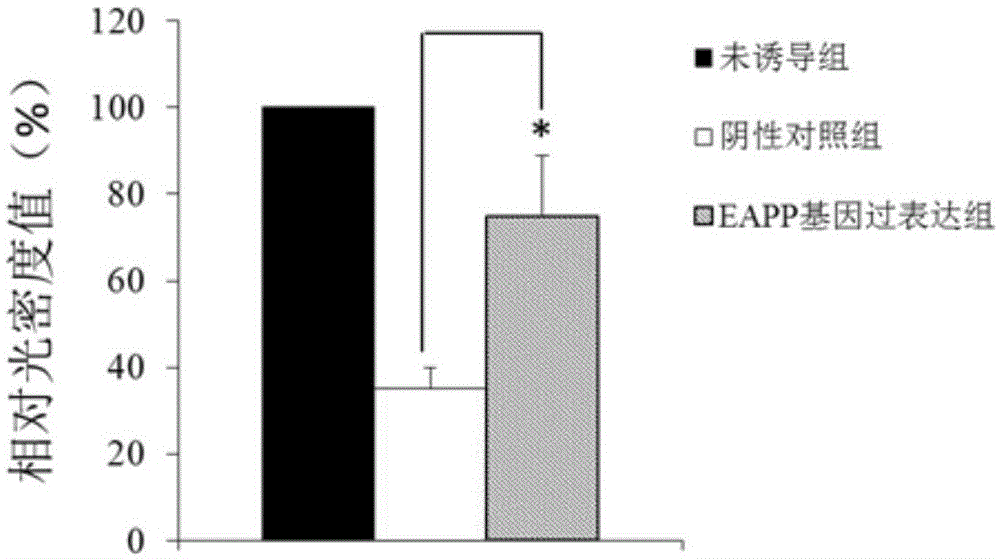Application of reagent for detecting EAPP genetic expression in Alzheimer disease diagnosis and treatment
A kind of Alzheimer's disease and genetic technology, applied in gene therapy, biological testing, material inspection products, etc., can solve the problems of irreversible disease, unclear etiology and pathogenesis
- Summary
- Abstract
- Description
- Claims
- Application Information
AI Technical Summary
Problems solved by technology
Method used
Image
Examples
Embodiment 1
[0054] Example 1 Screening for Gene Markers Related to Alzheimer's Disease
[0055] 1. Collection of peripheral blood samples
[0056] AD patients came from Beijing 301 Hospital, a total of 60 cases, aged 53-84 years old, all cases were diagnosed as AD, and its diagnostic criteria refer to the third revised edition of the American Diagnostic and Statistical Manual of Mental Disorders. A total of 50 cases were selected as the control group, selected from the routine physical examination population of Beijing Hospital. All the subjects were excluded from blood lipid metabolism and other diseases, aged 60-82 years. All subjects signed the informed consent for the testing project and provided peripheral blood for genetic testing.
[0057] 2. Total RNA extraction from blood
[0058] Extraction of total RNA from blood using Biotech Blood RNA Extraction Kit
[0059] (1) Take 250 μl (or 0.25 g) of whole blood into an RNase-Free filter column, centrifuge at 13,000 rpm for 2 minutes,...
Embodiment 2
[0089] Example 2 Construction of EAPP gene expression plasmid
[0090] 1. The human nerve cell line SH-SY5Y was incubated at 37° C. in 5% CO with DMEM (high glucose) medium containing 10% calf serum. 2 , Cultivated in an incubator with a relative humidity of 90%. The medium was changed once every 2-3 days, and 0.25% trypsin was used for routine digestion and passage.
[0091] 2. Overexpression of EAPP gene
[0092] 2.1 Construction of EAPP gene expression vector
[0093] Amplification primers were designed according to the coding sequence of the EAPP gene (as shown in SEQ ID NO.1), and the primer sequences were as follows: the forward primer was 5'-ATGAACCGGCTTCCGGAT-3' (SEQ ID NO.7), and the reverse primer was 5' -TTAGGAATGGCTTGCTAAAAC-3' (SEQ ID NO. 8). The coding sequence of the full-length EAPP gene was amplified from the cDNA library of adult fetal brain (clontech company, product number: 638831), and the above cDNA sequence was double-digested with restriction endonu...
Embodiment 3
[0102] Example 3 Antagonistic effect of EAPP gene expression on neuronal cell death induced by Aβ
[0103] 1. Cell transfection: The neural cell line R2L1 was transfected with pcDNA3.1-EAPP and pcDNA3.1 according to the method in Example 2.
[0104] 2. After 24 hours of transfection, the neural cell line R2L1 was cultured in a 96-well plate with a cell density of 0.5×10 4 cells / well. Divide the cells into the following groups:
[0105] Uninduced group: transfected with pcDNA3.1, without adding 20 μM Aβ42;
[0106] Negative control group (pcDNA3.1+Aβ42): pcDNA3.1 was transfected, and 20 μM Aβ42 was added to the medium at the same time;
[0107] EAPP gene overexpression group (pcDNA3.1-EAPP+Aβ42): transfect pcDNA3.1-EAPP, and add 20 μM Aβ42 to the medium at the same time;
[0108] Three replicate holes were set up for each group. After incubation at 37° C. for 20 h, MTT was added and incubated for 4 h. After adding the dissolving solution, incubate at 37°C for another 12h,...
PUM
 Login to View More
Login to View More Abstract
Description
Claims
Application Information
 Login to View More
Login to View More - R&D
- Intellectual Property
- Life Sciences
- Materials
- Tech Scout
- Unparalleled Data Quality
- Higher Quality Content
- 60% Fewer Hallucinations
Browse by: Latest US Patents, China's latest patents, Technical Efficacy Thesaurus, Application Domain, Technology Topic, Popular Technical Reports.
© 2025 PatSnap. All rights reserved.Legal|Privacy policy|Modern Slavery Act Transparency Statement|Sitemap|About US| Contact US: help@patsnap.com



